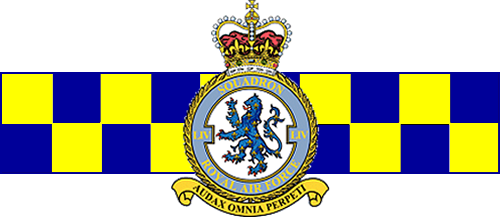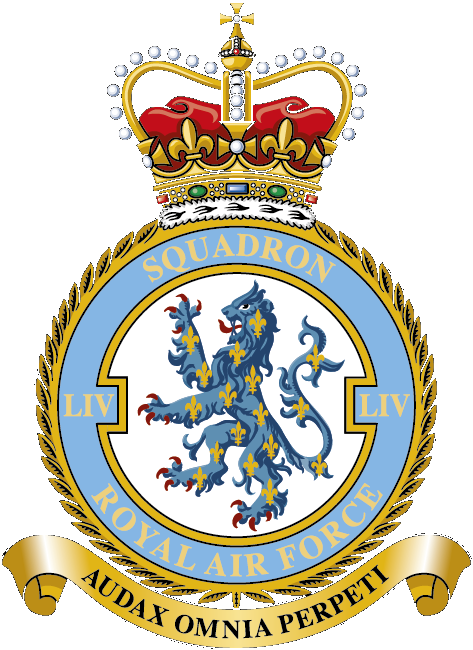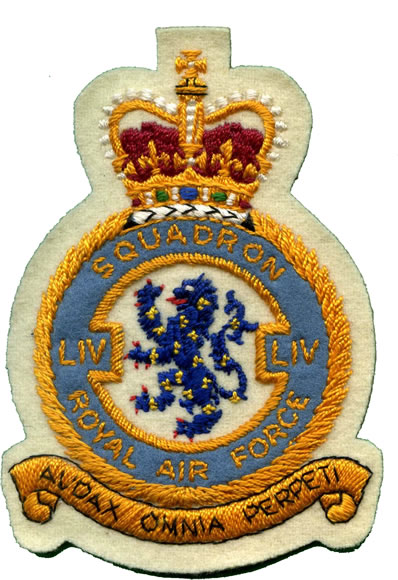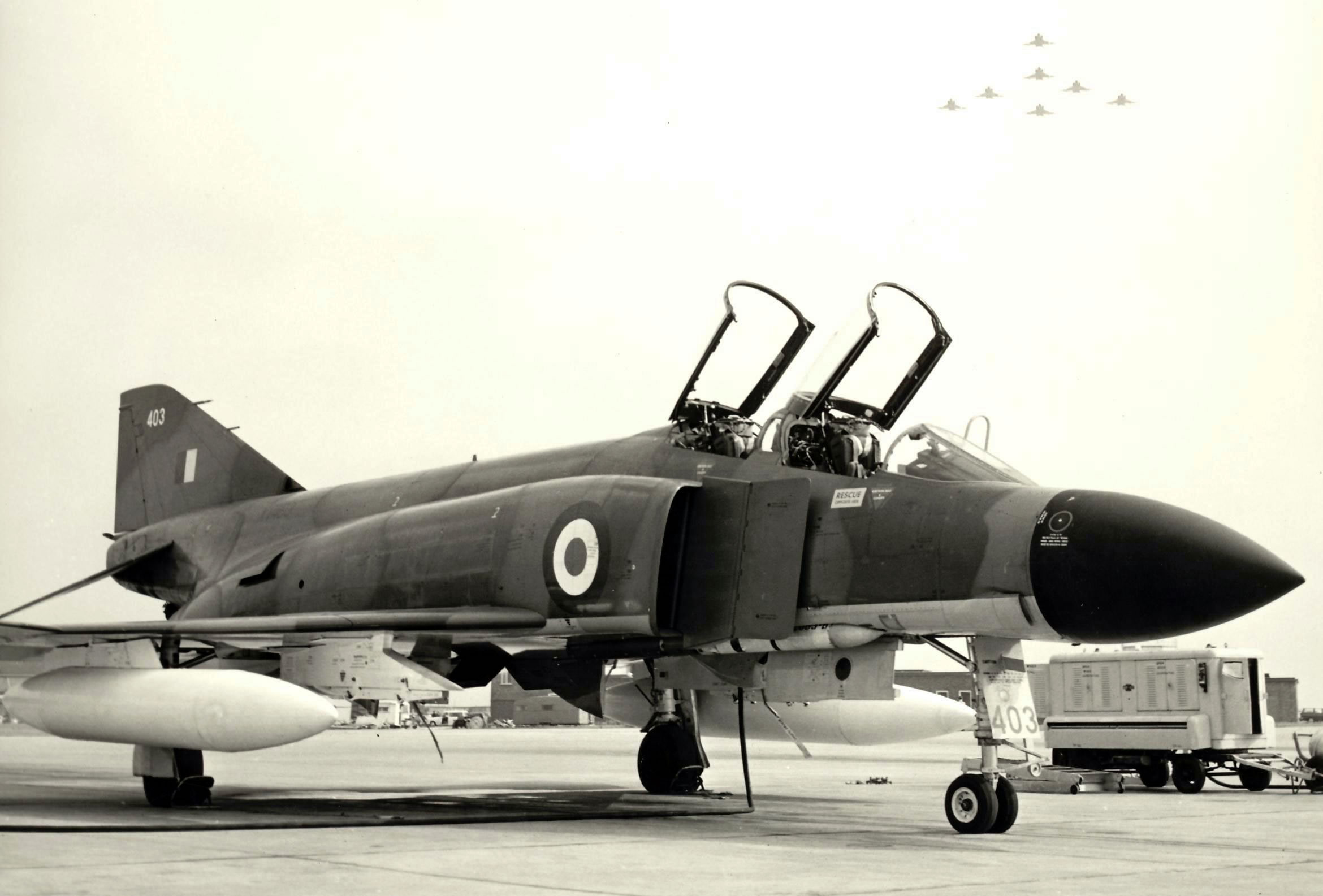No 54 Squadron
RAF Coningsby
1 Sep 1969 - 28 Mar 1974

Formed at Castle Bromwich on 5 May 1916, No 54 Squadron, like many others formed at the same time, was tasked with Home Defence duties flying BE2Cs. Four months later, however, it transferred to day fighter missions and moved to France escorting bombers and attacking observation balloons. The final months of the War were spent flying Camels in ground attack as well as fighter sorties. In February 1919, the Squadron returned to the UK, disbanding some ten months later.
The Squadron was reformed at Hornchurch on 15 January 1930 as a fighter squadron equipped initially with Siskins then subsequently Bulldogs, Gauntlets and Gladiators before the Squadron's first monoplane, the Spitfire, arrived in March 1939. The early days of the Second World War were spent patrolling the Kent coast, until, in May-June 1940, the unit provided air cover for the evacuation of Dunkirk. Following on from this, the Squadron was heavily engaged in the Battle of Britain until moving North to regroup prior to undertaking coastal patrols. In mid-1942, the Squadron left for Australia and joined the battle against the Japanese before disbanding in October 1945. On 15 November, No 183 Squadron, a Tempest ground-attack unit based at Chilbolton near Oxford, was renumbered No 54 and the Squadron spent a year training pilots destined for overseas service before receiving Vampires and moving to Odiham a year later.
In 1948, six Vampires from the Squadron made history when they completed the first crossing of the Atlantic by jet aircraft. Following a three year stint with Meteors, Hunters arrived in 1955, and the Squadron took up ground-attack duties as part of No 38 Group, frequently deploying to trouble spots around the world as part of the Group's Offensive Strike Wing. This role continued after re-equipping with Phantoms at Coningsby during 1969 and subsequent Jaguars that were delivered during 1974. Remarkably, the Squadron, role and aircraft have remained the same, albeit at a different base (Coltishall) and updated Jaguar aircraft. With the move to a more expeditionary footing, the squadron has seen a number of operational deployments in recent years including Northern Iraq and the Balkans.
With the decision taken to run the Jaguar fleet down in anticipation of the arrival of its replacement, the Typhoon, No 54 was disbanded at RAF Coltishall on 11 March 2005.
On 5 September 2005, 54 Squadron officially reformed with a new role, 3 aircraft types at RAF Waddington as the Intelligence Surveillance, Target Acquisition and Reconnaissance (ISTAR) Operational Conversion Unit to train aircrews from the three ISTAR platforms E-3D Sentry, Nimrod R1 and Sentinel R.

 No. 228 OCU
No. 228 OCU No 6 Sqn
No 6 Sqn No 54 Sqn
No 54 Sqn XLI Sqn
XLI Sqn II(AC) Sqn
II(AC) Sqn No 14 Sqn
No 14 Sqn No 17 Sqn
No 17 Sqn No 31 Sqn
No 31 Sqn No 64(R) Sqn
No 64(R) Sqn No 43(F) Sqn
No 43(F) Sqn No 111(F) Sqn
No 111(F) Sqn No 29(F) Sqn
No 29(F) Sqn No 23(F) Sqn
No 23(F) Sqn No 56(F) Sqn
No 56(F) Sqn No 74(F) Sqn
No 74(F) Sqn No 19(F) Sqn
No 19(F) Sqn No 92(East India) Sqn
No 92(East India) Sqn No 23(F) Sqn
No 23(F) Sqn 1435 Flt
1435 Flt RAF Coningsby
RAF Coningsby RAF Bruggan
RAF Bruggan RAF Laarbruch
RAF Laarbruch RAF Leuchars
RAF Leuchars RAF Wattisham
RAF Wattisham RAF Wildenrath
RAF Wildenrath RAF Stanley
RAF Stanley RAF Mount Pleasant
RAF Mount Pleasant


